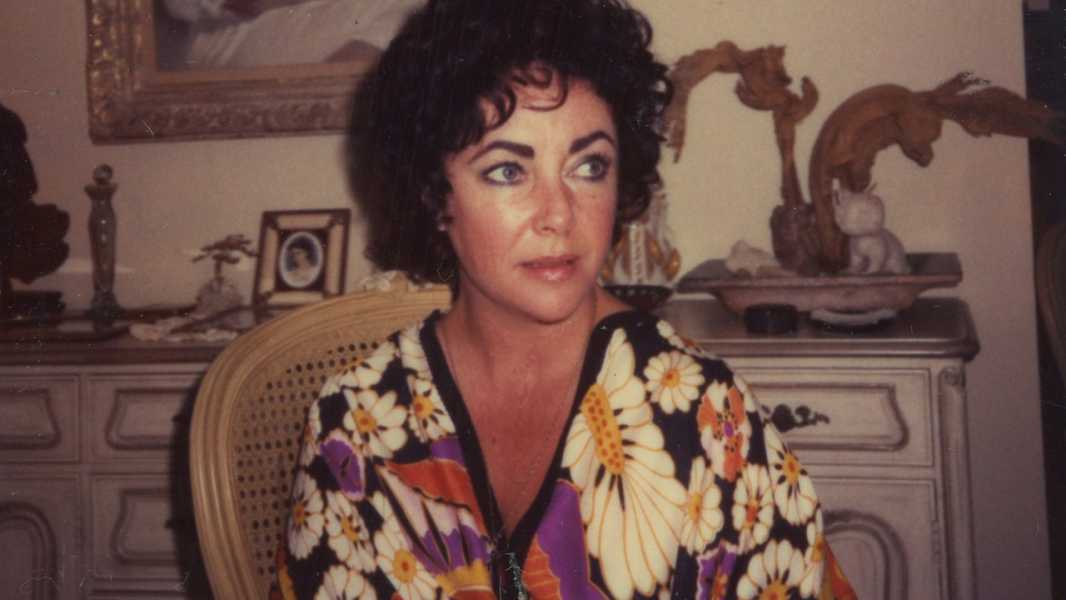
Save this storySave this storySave this storySave this story
The art of storytelling is the art of simplification—of giving smooth contours and sharp points to messily loose-ended incidents. That’s why, when artists tell their life stories, the plethora of factual details is secondary to the emotions, the ideas, the insights, and the sublime style that distinguish their art. So it is with Nanette Burstein’s documentary “Elizabeth Taylor: The Lost Tapes,” which is built around a series of audio interviews with Taylor from 1964, by the Life magazine journalist Richard Meryman. In them, Taylor reflects, at thirty-two, on the tumultuous life she’d been leading, as a Hollywood actress, since childhood. Without hearing the unedited tapes, it’s impossible to know what Burstein has left out (or what Taylor and Meryman avoided talking about), but what comes into focus in Taylor’s keen-edged anecdotes and reflections, is the studio system in which she worked. “The Lost Tapes” (which streams on Max starting August 3rd) not only unfolds the inner life of a movie star but also puts under intense scrutiny the very nature of Hollywood—the distinction between the art of movies and the distortions wrought when studios transform that art into big business.
Burstein keeps the movie’s focus on its main source—Taylor’s voice. Her words are often heard over footage of a reel-to-reel tape recorder, in a way that draws attention to the power of her voice. Burstein further emphasizes voices by offering no talking-head interviews; supplementary interviews (including with the actor Roddy McDowall, Taylor’s friend Doris Brynner, and agent Marion Rosenberg) are heard but not seen. The soundtrack unfolds over a judicious and often poignant selection of archival footage (including home movies, promotional reels, and news reports) and still photographs. The method is effective; “Elizabeth Taylor: The Lost Tapes” is no radical advance in documentary form, but its emphasis on the auditory over the visual subtly suggests the disconnect between a private individual and her public image.
As Taylor tells it, she was set on becoming a movie actress from the age of ten, when her parents took her to visit a Hollywood studio. Her father happened to know an M-G-M producer, who, having agreed to audition her as a favor, then immediately signed her to a contract and cast her in “Lassie Come Home” (1943). Told that she was too short to play the lead role of a child jockey in “National Velvet” (1945), she stretched herself with exercises to grow three inches in three months, got the part, and was propelled to stardom. Yet there is bitterness in her recollections of adolescent stardom. Her school lessons happened at the studio, with three hours of classes amid eight hours of work—“ten minutes here, fifteen minutes” between takes. She calls the routine “grim” and is adamant that switching constantly, on the set, between schoolwork and filming was detrimental both to her education and to her acting.
Taylor’s story is that of a managed life. Not only was she working as a child—a process no less stunting for children employed in the so-called dream factory than for those in regular jobs—but she was also being thrust into a public role, a faux identity, that distorted her emotional development and sense of a private life. She is clear-eyed about the creepiness of the way that the studio sexualized her image, as early as her mid-teens. (The documentary shows a promotional film touting her “glorious sixteen-year-old cover-girl beauty.”) And as with the publicity, so with the roles: “All of a sudden, at the age of sixteen, but looking twenty-four,” Taylor says, she found herself playing the wife of Robert Taylor, an actor twenty years her senior.
“I was thrown into the adult world. I had to behave like a sophisticated woman—and in my own world I was a terrified little girl,” Taylor says. Onscreen, she was called on to embody sex and romance, but studio life insured that she was chaperoned everywhere and never got to experience the usual freedom of teen-agers. The studio fabricated her teen flings for fan-magazine consumption, but she had no romantic experience. She was, she says, “not only a virgin physically but mentally,” and “the repercussions were that I made horrendous mistakes.” She cites, for starters, her first marriage, at eighteen, to the hotel heir Nicky Hilton, in a highly publicized tabloid relationship. She tells Meryman about the abuse she endured at Hilton’s hands, including “his kicking me in the stomach and causing a miscarriage.” She divorced Hilton within a year, and barely a year after that married the British actor Michael Wilding, who was on the cusp of forty. (Archival footage of London crowds surrounding the couple after their wedding gives a terrifying sense of the mass fervor amid which this twenty-year-old woman conducted her life.)
Meanwhile, Taylor’s career was progressing, but not to her liking. She had one role that mattered to her—in George Stevens’s 1951 film “A Place in the Sun,” an adaptation of Theodore Dreiser’s “An American Tragedy,” in which she co-starred with Montgomery Clift. It was the first time that she was considered an actress rather than a starlet, she says, but it was the exception: “I was forced to do things that I hated. I was given such shit that you should choke on.” As a result, she was getting reviews that weren’t just harsh but actually personally insulting. She says, “It kind of made me sick—I died inside.” At the same time, the experience fuelled “a kind of rebellion that started within me.”
Even another movie directed by Stevens, the large-scale 1956 melodrama “Giant,” was a less than happy experience. She was working with such trained actors as James Dean and Carroll Baker, and said, “All the Method actors still gave me an inferiority complex,” and Stevens didn’t help: “He constantly reminded me that I’m a movie star, not an actress.” Yet in each of the four years that followed, Taylor made movies that brought her Oscar nominations, winning for the 1960 movie “BUtterfield 8,” which she didn’t want to do at all: “It was such a piece of shit, it made me angry. And out of that anger, it kind of gave me an incentive.” When Meryman praises that performance, she repeats, “It was done out of anger.”
By that time, Taylor had experienced and endured, in a few whirlwind years, a lifetime of joy and heartbreak, exaltation and calamity. Immediately after her divorce from Wilding, in 1957, she was pursued by the producer Michael Todd, who, at their first meeting, declared that they were going to marry—and she thought he might just be right. He was the love of her life, she says, and archival footage gives an impression of his jovially sarcastic sense of humor as well as his commanding expertise in confronting and outmaneuvering indiscreet reporters. Todd was killed in a plane crash only thirteen months after their marriage. Taylor sought consolation in the company of Todd’s best friend, the singer Eddie Fisher: “I was keeping Mike alive by talking about him,” she says. But the relationship became a romance, and Fisher was married, to Debbie Reynolds. When he left Reynolds and married Taylor, the tabloid fallout was devastating; Taylor, embarking on her fourth marriage while still in her twenties, was widely depicted as a home-wrecker. As for the marriage, she says that she knew it was a mistake before she went through with it but was inhibited about backing out.
In 1960, Taylor signed a million-dollar contract (plus ten per cent of profits) to star in “Cleopatra.” The immensely complex history of this movie’s famously tortuous path to completion is tightly and allusively condensed in the documentary. Not long into the shoot, Taylor contracted pneumonia; she was hospitalized and had a tracheotomy, after which she was told to rest for six months before returning to work. The movie’s original director, Rouben Mamoulian, was replaced by Joseph L. Mankiewicz, who’d directed Taylor in “Suddenly, Last Summer,” for which she’d received an Oscar nomination. Cast members were replaced, too: the new Mark Antony was none other than Richard Burton.
At the time of its completion, in 1963, “Cleopatra” was reputed to be the biggest-budget movie ever made. (It cost forty-four million dollars, the equivalent of about four hundred and fifty million dollars today.) Mankiewicz intended to make two three-hour features; instead, “Cleopatra” was released as a single four-hour and three-minute film (and was subsequently trimmed some more). It nearly bankrupted its studio, Twentieth Century Fox, though it ultimately proved modestly profitable. It was largely derided by critics, whether for grandiosity or for artifice, and, of course, its reception was inextricably bound up with the media-stoked scandal about the extramarital romance between Taylor and Burton and the resulting breakups of their previous marriages.
Yet, in “Cleopatra,” Taylor delivers a performance, both of grandeur and of artifice, that differed drastically from those in the more realistic dramas for which she was acclaimed. In an audio clip in “The Lost Tapes,” Burton describes the nature of her achievement. From watching her earlier films, he said, “I thought she was just, in quotation marks, a star. I didn’t think she could act at all.” And, on the set of “Cleopatra,” he continued, “I watched Elizabeth do a scene in which she appeared to be doing nothing. And then you go and see the rushes, and Elizabeth—she was hair-raising, so brilliant. And you can’t learn it, I don’t think.” Burton’s observations are consistent with Taylor’s own reflections on her career and her claim that she never took an acting class in her life. “I believe that any technique or talent that I might have is not technique; it’s instinct,” she says. “If I am feeling something emotional in a scene, I sweat real sweat and I shake real shakes. A great deal of effort goes into making it seem effortless.”
Movies are the art for artists without technique—for artists who aren’t artists except in their souls. The camera takes what it wants, not what actors (or, for that matter, directors) give or think they’re giving. Because of Taylor’s grandly dramatic character and passionate nature—and because of the public role in which she was cast by M-G-M, and the public image created by the press—she was often cast in roles that required overheated extremes of expression, when in fact her passions came through more or less automatically, from her mere presence on camera. In “The Lost Tapes,” Taylor declares, “I think that some part of me is sorry that I became a public utility. I know I should be grateful. . . . I don’t like fame. I don’t like the sense of belonging to the public. I like being an actress, or trying to be an actress.” In “The Lost Tapes,” the conflict between those two professional roles, actress and star, is starkly dramatized.
Without a firmly established technique other than a Method of her own making—her sense of unity of what she was feeling and what she was expressing—she was less than persuasive in roles of highly expressive drama, because her own personality took over, leaving her characters on the sidelines like so many costumes. In “The Lost Tapes,” Taylor plays her supreme role: herself. Her voice is extraordinary, in its natural inflections and modulations and in the intimately dramatic matters that she brings to light. I’ve long felt that, in the transition in the nineteen-twenties from silent movies to talking pictures, the ability of actors to continue their careers depended less on the sound of their voices than on their conveying a sense that they had something to say that was worth hearing—that the fuller spectrum of recording conveyed a fuller spectrum of actors’ personalities and inner lives. The studio system may have given Taylor a mighty outlet for her mighty character, but it thrived on the deformations of her character, deformations that extended to how it was deployed in movies—and to her life itself. ♦
Sourse: newyorker.com






